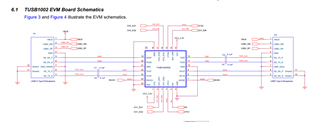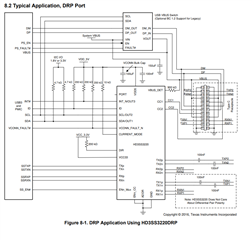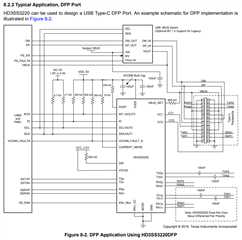Other Parts Discussed in Thread: , , HD3SS3220, HD3SS3212
Tool/software:
Hello,
I'm working on a project on using the TUSB1002 to redrive a mux. Looking at the pinouts and reference schematics for it, I've been getting confused because it seems as if in all the schematics, the TX pin on one side is used to drive the TX pin on the other side instead of the RX pin. Like the eval board for example.

The block diagram for it doesn't help either since it shows that the RX pins are connected to the TX pins. In the image above, P2's TX_P and TX_N are connected to the TUSB1002 TX_P and TX_N which are outputs, meaning that an output is driving another output. I also checked with the USB-C plug side to see if the RX pins connect to the TX pins and that's not the case either. Could someone please explain why the TX and RX pins are connected to TX and RX rather than TX and RX being connected to RX and TX?






